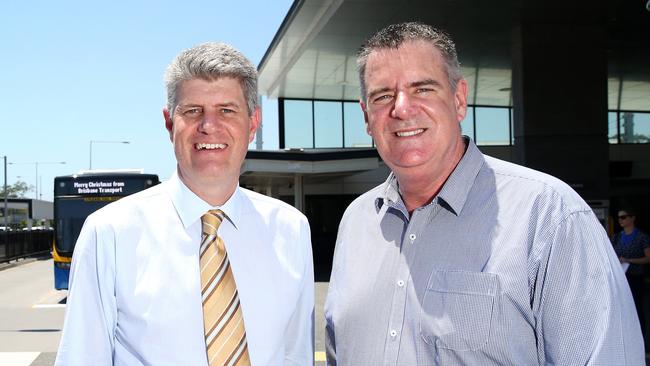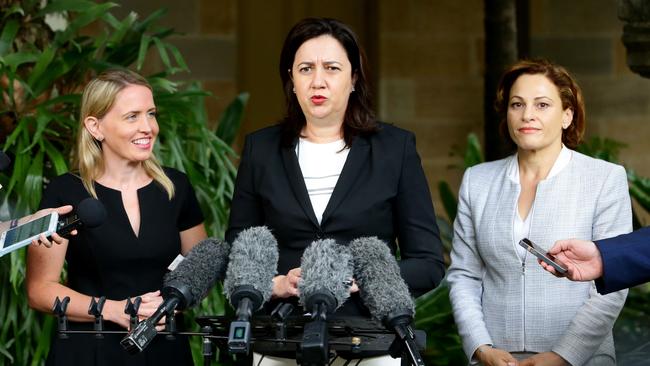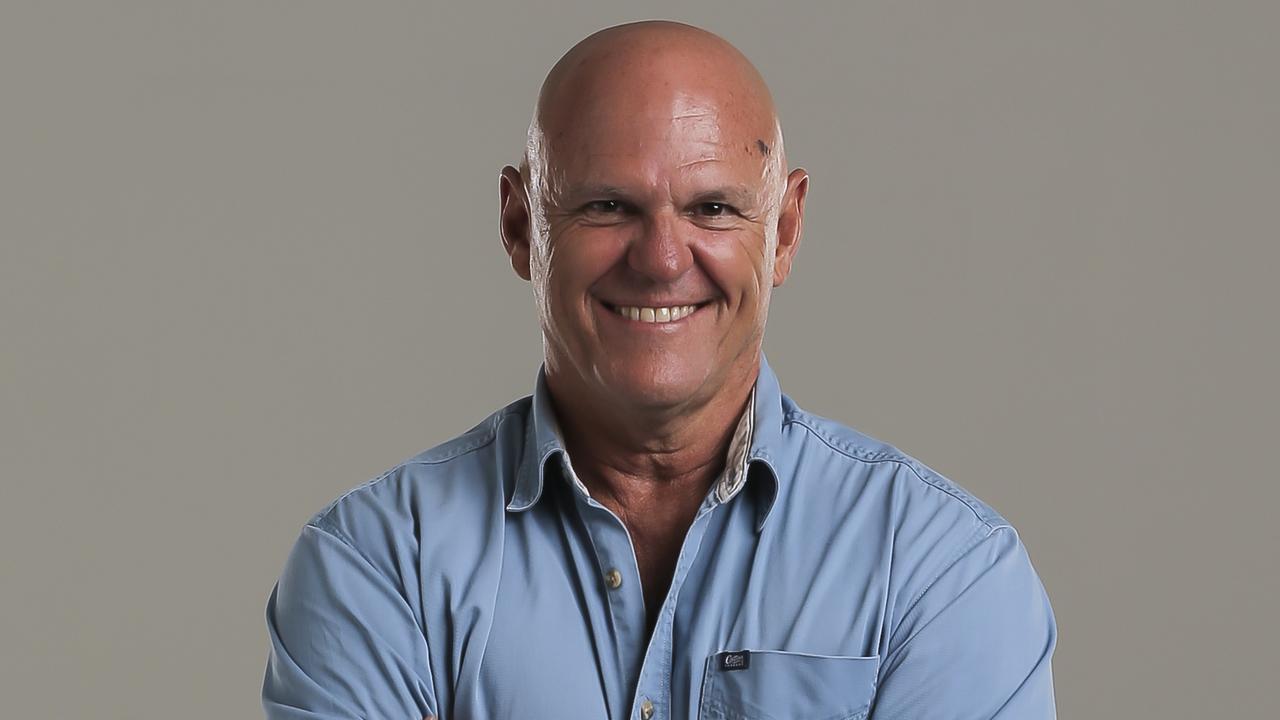Opinion: Queensland’s decades-old ministerial model needs to be reimagined
ANNASTACIA Palaszczuk’s ministerial reshuffle was all about political expediency. She tinkered when she should have overhauled as the state’s ministerial model is decades old and needs to be reimagined.

Opinion
Don't miss out on the headlines from Opinion. Followed categories will be added to My News.
ANNASTACIA Palaszczuk’s latest minor ministerial reshuffle was all about political convenience and expediency.
As an election looms, the minority Labor administration needed to move on quickly from the unexpected resignation of Transport Minister Stirling Hinchliffe. So again a new face was jammed into a vacancy, a trip was made to Government House and the show moved on.
Yet, the Queensland executive government model remains firmly anchored in the past, remains inward looking at the present and has no focus on the future. And it is to the detriment of the state.
Several ministerial titles and responsibilities have barely been altered since colonial Queensland became a state and Robert Herbert ruled as its first premier.

We still have a Public Works and Housing Minister, which is little different to the Secretary of Land and Works in the first Queensland Cabinet.
From time to time ministerial titles have been festooned with one fad or another like “wine industry development”. Or Cabinet business cards have been bulked up with needless extra words like “Great Barrier Reef”. But this has been little more than window dressing.
Deterred by the prospect of headlines screaming “Cabinet cost blow outs’’, premiers have tinkered when they should have overhauled.
Queensland’s lack of an Upper House has also been a handbrake on change, given it leaves governments with fewer MPs to pick from than their interstate, federal and international contemporaries.
Minority administrations, like the current Palaszczuk Government, are particularly challenged given the need to fill committee chair and member positions from the single pool of MPs in the unicameral parliament.
The decades-old ministerial model needs to be reimagined from the bottom to the top. There would be costs. But these could be offset by cuts elsewhere.
Like other Westminster systems, Queensland has parliamentary secretaries who are given the task of supporting a particular portfolio.
Their titles were changed to “assistant minister” in 2012 while their numbers have been chopped and changed under different administrations.
However, they’ve been used as little more than seat warmers at second string events. They pocket an extra $83,000 for their efforts. But they are not formally vested with particular responsibilities and can’t be asked questions in Parliament.
These roles should be vested with proper legislative duties, their holders sworn into portfolio and acting like an outer Cabinet, as occurs in Canberra.

Traditional and time-consuming areas of a minister’s responsibility could be given to their assistants. There could be a finance ministry, for instance, to allow the treasurer to concentrate on macroeconomic issues.
Queensland could have a stand-alone minister for the trouble areas of public transport and child safety or a greater focus on major events and international education.
Labor tried to cut Cabinet’s size from the Newman-era 19 to 14. It didn’t work because the upper echelon of the executive was overburdened with responsibilities while lower level ministers pocketed the same pay despite lighter duties.
Morphing assistant ministers into an outer Cabinet would allow such a cut to occur.
In effect, that’s how it already works with most of the real power corralled around an inner sanctum. But formalising this would allow whatever political party was in power to hone in on its priorities, tackle troubled areas and plan for the future.
It would also provide the public and industry with better access to the right people in the administration.
The trade and state development areas could be reinvented so they are more acutely focused on creating investment.
Indigenous communities could have their own minister to better tackle their diverse and challenging issues.
For too long Queensland governments have fashioned themselves on the past and been left wondered why they failed to recognise the opportunities of the future.
Tearing up tradition and giving the ministry a complete makeover would be a good start towards addressing this.
Steven Wardill is The Courier-Mail’s state affairs editor


